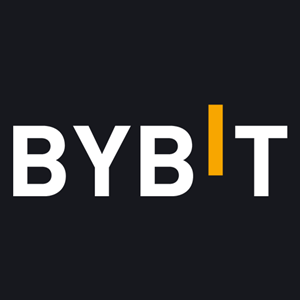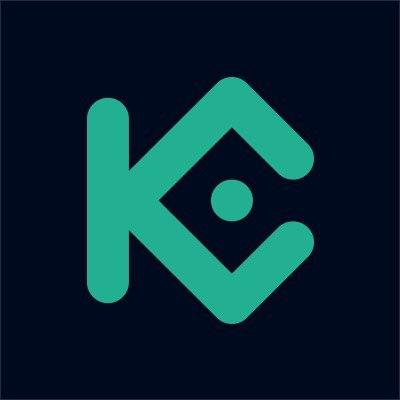Delta Neutral Strategies in Crypto: Profit Without Directional Risk October, 2025
Delta neutral strategies let crypto traders profit without guessing market direction. By balancing positions across spot, futures, and options, you can capture funding, premiums, and volatility gains while reducing risk.
 Written by Nikolas Sargeant
Written by Nikolas Sargeant
| Fees | Deposit Methods | |||||||||
|---|---|---|---|---|---|---|---|---|---|---|
| Name | Cryptos | Taker | Maker | Withdrawal | Wire | Credit | Trading API | Active Since | Offer | |

Bybit
Contract Trading Exchanges
|
188 | 0.06% | 0.01% | 0.0005 | 2018 |
GET UP TO $600 IN REWARDS
|
Visit | |||

Binance
Centralized Exchanges
|
433 | 0.10% | 0.10% | 0.0002 | 2017 |
GET UP TO USD 100 WELCOME BONUS
|
Visit | |||

KuCoin
Centralized Exchanges
|
637 | 0.10% | 0.10% | 0.0005 | 2017 |
GET UP TO 500 USDT IN SIGN-UP BONUS
|
Visit | |||
In the fast-moving world of cryptocurrency trading, most strategies revolve around predicting price direction, buying low and selling high, or shorting when you expect a drop. But what if you could generate consistent returns without caring whether Bitcoin, Ethereum, or any other coin goes up or down? That’s exactly what delta neutral strategies aim to achieve.
In trading terms, delta measures how much the price of a position changes in response to movements in the underlying asset. A delta of +1 means the position gains $1 for every $1 the asset rises, while a delta of -1 means the opposite. When your net delta is zero, your position is theoretically insulated from price swings.
Delta neutral strategies are widely used in traditional finance by hedge funds, market makers, and institutional traders, and now, they’re fully accessible in crypto markets thanks to the growth of advanced trading platforms. By combining spot, futures, and options positions in the right proportions, you can lock in profits from funding rates, price discrepancies, or volatility, all while neutralizing directional risk.

Popular exchanges like Bybit, Binance, and KuCoin offer the trading tools, liquidity, and contract types needed to set up these strategies effectively. Whether you’re farming funding rates, executing cross-exchange arbitrage, or balancing option deltas with futures, these platforms make it possible to implement delta neutral setups in just a few clicks.
In this guide, we’ll break down the mechanics, strategies, and risks of delta neutral trading, and show you how to make it work in crypto.
The Concept of Delta in Crypto Trading
In derivatives trading, delta measures how sensitive a position’s value is to changes in the underlying asset’s price. It’s expressed as a number between -1 and +1 for options, or as a straightforward position size multiplier in spot and futures trading.
- Positive delta means your position benefits when the asset’s price rises.
- Negative delta means your position benefits when the asset’s price falls.
For example:
- Buying 1 BTC spot on Binance gives you a delta of +1. If BTC rises by $100, your position gains $100.
- Shorting 1 BTC perpetual contract on Bybit gives you a delta of -1. If BTC drops by $100, your position gains $100.
A delta neutral position is constructed so that your total net delta = 0. This means that, in theory, your portfolio is unaffected by small moves in the underlying asset’s price.
Here’s a simple example in crypto:
- You buy 1 BTC on Binance (delta = +1).
- You short 1 BTC perpetual on KuCoin (delta = -1).
- Your net delta is now +1 + (-1) = 0.
While the price of BTC moves up or down, your combined position’s value remains stable in terms of market exposure. This allows you to focus on other sources of profit, such as funding rate payments, price basis differences between spot and futures, or options time decay, instead of guessing market direction.

In practice, delta isn’t static. Factors like volatility, contract type, and time decay in options can cause your delta to shift, requiring adjustments. That’s where active monitoring on exchanges like Bybit, Binance, and KuCoin becomes essential, as each platform offers tools to track and rebalance your delta in real time.
Why Go Delta Neutral? Benefits & Risks
Delta neutral trading isn’t just a fancy hedge fund trick, it’s a practical way for crypto traders to reduce directional risk while still unlocking profit opportunities.
Benefits
- Hedge Against Price Swings - Crypto markets can move 5–10% in a single day. A delta neutral position helps you avoid being whipsawed by volatility, making it easier to stick to your plan.
- Profit From Non-Directional Opportunities - Your gains come from factors like funding rates, spot-futures basis, or options volatility, not from predicting price direction. For example, if Binance shows a futures premium over spot, you can lock in that difference without worrying about where BTC moves next.
- Emotional Stability - Without the constant stress of market direction, traders can make more rational decisions. You’re no longer staring at charts worrying about every candle.
- Flexible Across Assets - Works with BTC, ETH, and even altcoins on platforms like Bybit and KuCoin, wherever there’s a liquid derivatives market.
Risks
- Imperfect Hedging - Delta can shift over time (known as delta drift), especially in options-based strategies. If you don’t rebalance, your “neutral” position may start leaning bullish or bearish.
- Funding Rate Changes - A funding rate that’s positive today can turn negative tomorrow, flipping a profitable position into a cost. For example, if you’re shorting ETH perpetuals on Bybit to earn funding, and rates turn negative, you’ll be paying instead of receiving.
- Execution & Liquidity Risk - During high volatility, spreads can widen, and slippage can eat into profits — especially if you’re moving positions between exchanges like Binance and KuCoin for arbitrage.
- Fees - Multiple legs mean multiple fees. Maker/taker rates vary, and on high-volume strategies, costs add up fast.
While delta neutral strategies can reduce exposure to price swings, they’re not “risk free.” Instead, think of them as risk reallocation, shifting your exposure from market direction to execution precision, funding rate stability, and operational efficiency. That’s why understanding the right strategy for the right market condition is critical.

Cash-and-Carry Arbitrage
Cash-and-carry arbitrage is one of the most straightforward delta neutral strategies in crypto. It involves buying an asset in the spot market and shorting a corresponding futures contract to lock in a risk-free (or low-risk) return from the price difference between the two markets.
This difference, called the basis, often exists because futures can trade at a premium or discount to spot prices, depending on market sentiment. In bullish conditions, quarterly futures on exchanges like Bybit, Binance, or KuCoin often trade above spot, creating an opportunity for arbitrage.
Example:
- BTC spot on Binance is trading at $30,000.
- BTC quarterly futures on Bybit are trading at $30,300 (a $300 premium).
- You buy 1 BTC spot on Binance and short 1 BTC quarterly future on Bybit.
- At expiry, both settle at the same price, but you keep the $300 locked-in premium (minus fees).
This setup creates a net delta of zero:
- Long 1 BTC spot = delta +1.
- Short 1 BTC futures = delta -1.
- Net delta = 0.
Key Points:
- Works best in markets with a persistent futures premium.
- Requires capital on both spot and futures exchanges.
- Profits are predictable if held to contract expiry.
While cash-and-carry arbitrage removes directional risk, it doesn’t eliminate operational risks like exchange downtime, liquidity issues, or sudden changes in contract terms. That’s why traders often spread positions across reliable, liquid platforms like Binance, Bybit, and KuCoin to maximize safety and execution speed.

Perpetual Funding Rate Farming
Funding rate farming is a delta neutral strategy that takes advantage of the funding payments in perpetual futures contracts. Perpetuals don’t expire like quarterly futures, instead, exchanges like Bybit, Binance, and KuCoin use funding rates to keep prices in line with the spot market.
When the funding rate is positive, long positions pay shorts. When it’s negative, shorts pay longs. A trader can capture these payments by holding equal and opposite positions in the spot and perpetual markets.
Example:
- ETH spot price on KuCoin: $2,000.
- ETH perpetual on Binance: funding rate is +0.03% every 8 hours.
- You buy 1 ETH spot on KuCoin (delta = +1) and short 1 ETH perpetual on Binance (delta = -1).
- Your net delta = 0, so you’re insulated from ETH price changes.
- Every 8 hours, you receive the funding payment from longs on Binance.
If you hold for two weeks and the rate remains stable, those small payments add up, without needing ETH to go up or down.
Key Considerations:
- Funding rates are variable; a profitable rate today can reverse tomorrow.
- You need to monitor funding rate trends across exchanges, Bybit, for example, may offer better rates than Binance for certain pairs on a given day.
- Works best in strong trending markets, where funding rates tend to stay one-sided for longer periods.
Funding rate farming is popular among crypto arbitrage traders because it can generate steady income, but it requires active management and quick reaction when rates flip.

Options-Based Delta Neutral (Straddles & Strangles)
Options give traders more flexibility in building delta neutral setups because they can profit from volatility instead of price direction. Two common approaches are the straddle and strangle strategies.
A straddle involves buying both a call and a put option with the same strike price and expiry. A strangle is similar but uses different strike prices for the call and put, often making it cheaper to enter.
Example (Straddle):
- BTC is trading at $30,000 on Bybit’s options market.
- You buy a BTC call with a $30,000 strike and a BTC put with the same strike, both expiring in one month.
- Initially, your combined position is delta neutral, gains on the call offset losses on the put, and vice versa.
- If BTC moves sharply in either direction, one option’s value will increase enough to offset the other’s loss, generating profit.
However, options deltas change over time (due to price movement and time decay), so traders often add small spot or futures positions to keep their portfolio delta near zero. For example, if BTC starts rising and your net delta becomes +0.2, you might short a small BTC amount on Binance or KuCoin to bring it back to neutral.
Key Points:
- Straddles and strangles work best when you expect big moves but don’t know the direction.
- You’ll pay upfront premiums, so you need enough volatility to cover the cost.
- Managing delta drift is essential, Bybit, Binance, and KuCoin all offer futures you can use for quick hedging.

Cross-Exchange Arbitrage
Cross-exchange arbitrage is a delta neutral approach that takes advantage of price discrepancies for the same asset across different trading platforms. Because crypto markets are fragmented, prices for BTC, ETH, or altcoins can differ slightly between exchanges like Bybit, Binance, and KuCoin, especially during high volatility or low liquidity periods.
The idea is simple: buy low on one exchange, short high on another, locking in the spread without taking on market direction risk.
Example:
- SOL is trading at $32.00 on Binance spot.
- On KuCoin, SOL perpetual contracts are priced at $32.30.
- You buy 1,000 SOL spot on Binance (delta = +1,000 SOL) and short 1,000 SOL perpetuals on KuCoin (delta = -1,000 SOL).
- Net delta = 0, so you’re insulated from SOL price moves.
- When the price gap closes (often within minutes or hours), you close both positions and capture the $0.30 per SOL difference.
Why This Works:
- Price differences occur due to liquidity imbalances, slower order book updates, or sudden surges in buying/selling pressure.
- Crypto moves 24/7, so arbitrage windows can appear anytime.
Considerations:
- Speed is everything, latency or withdrawal times can erase the profit opportunity.
- Best executed using API connections on both exchanges to trade instantly.
- Watch out for trading fees, which can eat into small spreads.
Many traders keep accounts funded on multiple platforms like Bybit, Binance, and KuCoin to react quickly to these opportunities, ensuring they can execute the hedge and lock in profit before the spread disappears.

Calculating & Adjusting Delta in Real Time
Building a delta neutral position is only the first step. Maintaining it requires continuous monitoring and adjustment, because delta isn’t static. Factors like price movement, volatility changes, and time decay (in options) can cause your net delta to drift, leaving you unintentionally exposed to market direction.
Measuring Delta
Most major exchanges, including Bybit, Binance, and KuCoin, display position deltas in their derivatives or options trading interfaces. This shows how much your portfolio value would change with a $1 move in the underlying asset. For example:
- If your portfolio delta is +0.5 BTC, a $100 BTC move would net a $50 change in value.
- If your portfolio delta is -0.2 BTC, the same move would result in a $20 change, but in the opposite direction.
If your goal is delta neutral, you want this number as close to zero as possible.
Adjusting Delta
When your delta shifts, you can rebalance by adding or reducing spot, futures, or options positions. For example:
- You start with a perfectly neutral BTC position (+1 BTC spot, -1 BTC perpetual short).
- BTC rises sharply, and your options positions gain value, pushing your net delta to +0.3 BTC.
- To rebalance, you could short 0.3 BTC on Bybit or Binance to bring your net delta back to zero.

Tools for Real-Time Adjustments
- Portfolio Dashboards: Binance’s “Portfolio Margin” and Bybit’s “Unified Margin” accounts consolidate all positions and show total delta across assets.
- Third-Party Analytics: Tools like Delta Exchange Analytics or coinalyze.net can track your greeks across multiple exchanges.
- APIs & Bots: Some traders set automated scripts to hedge when delta drifts past a set threshold (e.g., ±0.1 BTC).
Why Adjusting Matters
Even a small delta drift can lead to significant losses if the market moves quickly. For instance, with a +0.5 BTC delta, a $1,000 BTC drop would mean a $500 loss — negating much of the benefit of being “neutral.” By monitoring delta across Bybit, Binance, and KuCoin, you can react fast and maintain the integrity of your strategy.
Delta neutral trading is a dynamic process, without active adjustments, it can easily become directional risk trading in disguise.
Fees, Funding Rates, and Execution Considerations
In delta neutral trading, cost control is just as important as market execution. Even if your strategy is sound, excessive fees or unexpected funding rate changes can wipe out your gains.
Trading Fees
Every leg of your trade, spot buy, futures short, options contract, comes with maker or taker fees. Exchanges like Binance, Bybit, and KuCoin have tiered fee schedules based on your trading volume.
- Maker fees (placing limit orders) are often lower and sometimes even rebate you.
- Taker fees (market orders) are higher but guarantee execution.
For high-frequency delta neutral strategies like funding rate farming or cross-exchange arbitrage, shaving off even 0.01% per trade can significantly boost your ROI.
Funding Rates
Funding rates are critical in perpetual contracts.
- Positive funding = longs pay shorts.
- Negative funding = shorts pay longs.
If you’re counting on funding income, monitor rates across platforms. A rate flip can turn your cash cow into a cost center. For example, if you’re short ETH perpetuals on Bybit to collect funding and the rate turns negative, you’ll be paying instead of earning.

Execution Speed & Slippage
When opportunities appear, especially in arbitrage, execution speed is everything. Price gaps can close in seconds.
- Keep accounts pre-funded on multiple exchanges.
- Use API trading for instant order placement.
- Watch for thin order books in low-volume pairs, where slippage can eat into your locked-in spread.
Managing these cost and execution variables can be the difference between a profitable delta neutral setup and a losing one.
Risk Management in Delta Neutral Strategies
Even though delta neutral strategies are designed to limit exposure to price swings, they still carry operational, market, and execution risks. Effective risk management is what separates consistent profits from costly mistakes.
Position Sizing
Avoid using all your capital in a single setup. Splitting your capital across multiple assets or strategies reduces the impact of unexpected events, such as a sudden funding rate flip on Bybit or Binance.
Avoid Over-Hedging
While it’s tempting to “over-neutralize” your delta, doing so can lead to unnecessary fees and complexity. Aim for a small tolerance range (e.g., ±0.05 BTC) rather than obsessively rebalancing every minor change.
Stop-Loss Protocols
Even hedged positions can fail if liquidity dries up or a leg of the trade can’t be closed. Using stop-loss orders on the active side (futures or options) can limit damage if something breaks.

Exchange Risk Diversification
Spreading positions across Bybit, Binance, and KuCoin helps mitigate the impact of downtime, withdrawal delays, or sudden rule changes on any one platform.
A delta neutral position reduces market direction risk, but without risk controls, you’re still vulnerable to operational errors and rapid market shifts. Treat these strategies like precision instruments: profitable when maintained, dangerous when neglected.
Choosing the Right Exchange (Bybit, Binance, KuCoin)
Your choice of exchange can make or break a delta neutral strategy. The best platform for you depends on liquidity, fees, available instruments, and execution speed.
Bybit
Bybit is known for its deep perpetual futures liquidity and fast order execution. It also offers a robust options market, making it ideal for traders who want to combine options and futures in a single delta neutral setup. The interface shows live position delta, which is crucial for ongoing hedging.
Binance
Binance offers the widest range of spot and derivatives pairs in the market, plus advanced margin and portfolio margin features. Its large user base means high liquidity in both major and altcoin markets, which is critical for strategies like cross-exchange arbitrage. Binance’s futures funding rate history is also a useful tool for identifying funding rate farming opportunities.
KuCoin
KuCoin is popular for low fees and a wide selection of smaller altcoins that may not be listed on other exchanges. While its options market is smaller than Bybit’s, KuCoin’s futures platform offers competitive funding rates and good liquidity in mid-cap pairs, useful for traders looking beyond BTC and ETH.
Many traders keep accounts on all three exchanges to switch between them depending on which offers the best funding rate, premium, or spread opportunity at any given time. A diversified exchange setup also reduces counterparty risk if one platform experiences downtime or sudden policy changes.

Case Studies — Delta Neutral in Action
Sometimes the easiest way to understand delta neutral strategies is to see them play out in real market conditions. Here are two practical examples using BTC and ETH.
Case Study 1: Bitcoin Cash-and-Carry Arbitrage
Setup:
- BTC spot on Binance: $30,000
- BTC quarterly futures on Bybit: $30,300
- Premium: $300 per BTC (~1% over the contract term)
Execution:
- Buy 1 BTC spot on Binance (delta = +1).
- Short 1 BTC quarterly futures on Bybit (delta = -1).
- Net delta = 0, so price swings won’t impact the position’s value.
Result: At expiry, futures and spot prices converge. You close both legs and keep the $300 premium (minus trading fees). If the annualized basis rate is 4%, this strategy could net that return with minimal market exposure.
Notes: This works best when futures premiums are elevated, often in bullish market conditions. The risk is mainly execution delays or sudden contract rule changes.
Case Study 2: ETH Funding Rate Arbitrage
Setup:
- ETH spot on KuCoin: $2,000
- ETH perpetual on Binance: Funding rate = +0.03% every 8 hours
Execution:
- Buy 10 ETH spot on KuCoin (delta = +10).
- Short 10 ETH perpetual on Binance (delta = -10).
- Net delta = 0 — ETH price moves won’t affect your PnL.
Result: Every 8 hours, longs on Binance pay you the funding rate. Over two weeks (42 funding periods), that’s: 0.03% × 42 × 10 ETH × $2,000 = $252 in funding income.
Notes: The main risk is that funding rates can flip negative, turning an income stream into a cost. Monitoring and adjusting is essential, Bybit might offer higher or more stable funding during certain market phases.
These examples show how delta neutral trading shifts your profit drivers away from guessing price direction and toward capturing structural market inefficiencies. By leveraging tools on Bybit, Binance, and KuCoin, you can replicate these setups across different pairs and timeframes.

Conclusion & Next Steps
Delta neutral strategies open the door to consistent, market-independent profits in the volatile world of crypto trading. By balancing positions to keep your net delta at zero, you shift your focus from predicting price direction to capturing predictable gains from funding rates, futures premiums, or volatility.
Platforms like Bybit, Binance, and KuCoin make these strategies accessible to everyday traders, offering the liquidity, trading instruments, and data tools needed to execute and maintain them. Whether it’s a cash-and-carry setup, funding rate farming, or options-based volatility play, the principles remain the same: hedge your exposure, monitor your delta, and manage your operational risks.
The smartest approach is to start small, track performance closely, and gradually scale as you refine your execution. Delta neutral trading isn’t risk-free — but in skilled hands, it can be a steady source of returns in any market condition.
| Fees | Deposit Methods | |||||||||
|---|---|---|---|---|---|---|---|---|---|---|
| Name | Cryptos | Taker | Maker | Withdrawal | Wire | Credit | Trading API | Active Since | Offer | |

Bybit
Contract Trading Exchanges
|
188 | 0.06% | 0.01% | 0.0005 | 2018 |
GET UP TO $600 IN REWARDS
|
Visit | |||

Binance
Centralized Exchanges
|
433 | 0.10% | 0.10% | 0.0002 | 2017 |
GET UP TO USD 100 WELCOME BONUS
|
Visit | |||

KuCoin
Centralized Exchanges
|
637 | 0.10% | 0.10% | 0.0005 | 2017 |
GET UP TO 500 USDT IN SIGN-UP BONUS
|
Visit | |||
